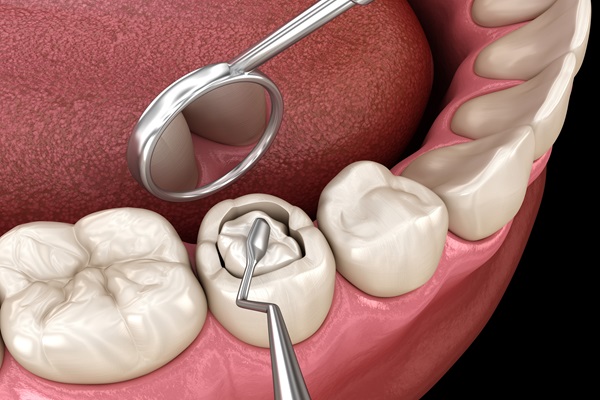Do Dental Sealants Protect Children’s Teeth?

Most people develop a cavity at some point in their lives, but children are especially prone to tooth decay. Dental sealants can be used to help lower the risk of getting cavities, protecting a child's teeth for many years. This supplemental treatment offers many benefits and is recommended by most dentists for virtually all children between the ages of 6 and 12.
Understanding dental sealants
According to the American Dental Association, dental sealants can reduce the risks of tooth decay in molars by as much as 80%. Still, less than half of children at the recommended ages receive them. By understanding dental sealants and why they are suggested for most children, parents can make an informed decision about protecting their child's dental and overall health.
Why are dental sealants recommended?
Young children are very susceptible to tooth decay for a number of reasons:
- Diets high in sugar
- Inability to brush and floss well independently
- Resistance to cleanings both at home and at the dentist's office
- Higher risks for dental injuries
- Finger-sucking or chewing on foreign objects, introducing more bacteria to the mouth
While cavities can develop on any tooth, molars are often more prone to decay because of their shape and location. These teeth are positioned in the very back of the mouth, making them much more difficult for most people to clean properly. In addition, molars have grooves in their surfaces that can trap food particles, leading to cavities if not quickly removed. Some people are genetically prone to deeper grooves in their molars, which are called pits or fissures. In these situations, tooth decay is even more likely.
Cavities should always be treated in every dental patient, even on baby teeth in young children. Failing to treat a cavity can lead to serious complications, including pain, gum disease, and infection. Unfortunately, many children do not handle dental work well, especially at a young age. For these reasons, prevention is the preferred approach, which is why dental sealants are so beneficial for children.
How are dental sealants placed?
Sealing the teeth is quick, simple, and pain-free. After cleaning the area thoroughly, a dentist applies a tooth-color resin to the surface, covering the deeper grooves of the molar and forming a tight seal against the tooth. A dental light is used to cure the sealant so it hardens quickly and is fully set in a matter of minutes. The dentist may use tools to grind or shape down the sealant to ensure it is comfortable for the patient. By the time the appointment is over, patients can eat and drink as normal.
Can anyone get dental sealants?
Both children and adults can receive dental sealants. They may be suggested to adults who have a higher than normal risk for tooth decay. Sealants are usually recommended to all younger patients around age 6. This is the time when permanent molars begin to erupt in the mouth, and most dental sealants are applied to permanent teeth. However, in some situations, a dentist may recommend sealants for baby teeth as well.
Preventing tooth decay
While dental sealants certainly play an important role in cavity prevention, other routine practices can be just as important, if not more so. As soon as the first baby tooth erupts, parents should start brushing twice each day, building healthy habits while keeping these tiny teeth clean and healthy. Routine dental visits are essential and should start around the same time, no later than the first birthday. All children should visit a dentist at least once every six months for a professional cleaning and checkup.
When brushing at home, be sure to use fluoride toothpaste starting around age 2 or 3; your dentist can help you know when the time is right for your child to make the switch. Also, take care to limit sugary drinks and treats. Gummy snacks, soda, sports drinks, and sticky or hard candies are some of the worst offenders. Encourage your child to drink water instead and save the sweets for special occasions. By combining healthy habits with sealing the teeth, your child can significantly lower the risk for tooth decay.
Conclusion
Cavities are a fact of life, but dental sealants can help prevent them. This simple treatment can reduce the chances of developing tooth decay, helping children avoid uncomfortable dental work and other oral health problems. When used as a supplement to excellent dental hygiene at home, sealants can be very effective at protecting a child's teeth.
Request an appointment here: https://riverfallsfamilydental.com or call River Falls Family Dental at (812) 962-7342 for an appointment in our New Albany office.
Check out what others are saying about our dental services on Yelp: Dental Sealants in New Albany, IN.
Recent Posts
A dental sealant is a covering that goes on the teeth to protect against decay. The foods and drinks that you consume every day are what can do the greatest harm to your teeth. Without protection with dental sealant, sugars, acids, and other things can erode, degrade, and damage the teeth. Learn about dental sealants…
Dental sealant placement forms a barrier between the teeth and the substances that can cause tooth decay. It is a powerful tool to prevent tooth decay, especially in children. However, it is not a substitute for good oral hygiene. Patients with sealants still need to brush and floss on a daily basis and see a…
Dental sealants are one great defense against tooth decay or cavities. Tooth decay is one of the more common problems that dentists encounter. According to the CDC, around 90% of adults over the age of 20 will experience a cavity in their lifetime, and many adults will experience more than one. Tooth decay often begins…
Cavities are one of the most frequent issues that dentists treat. Cavities can affect anybody, even children, and if left untreated, they can cause severe discomfort. Cavities that go untreated may lead to an abscess and possibly a nerve infection, as well as a lot of pain and tooth loss. On the other hand, dental…


